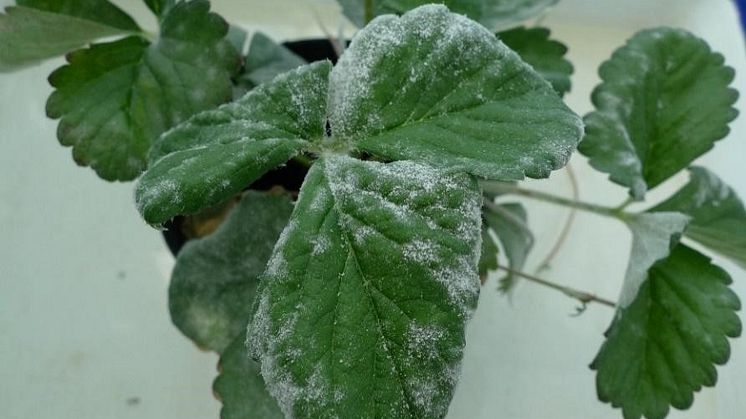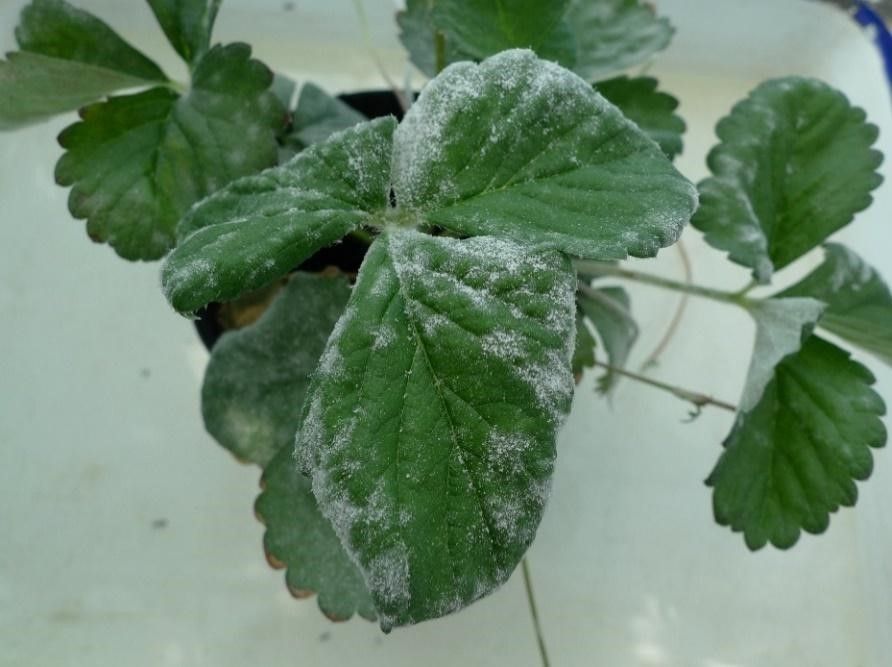
Press release -
First report of quantitative analysis on the number of strawberry powdery mildew conidia produced in a lifetime -- Hopes of suppressing powdery mildew fungi without over-reliance on agricultural chemicals -- Kindai University
A research group consisting of Shuka Ayabe (senior at Kindai University, Faculty of Agriculture, Department of Agricultural Science, Nara, Japan), Yutaka Kimura (2nd year of the master’s student at Kindai University, Graduate School of Agriculture), Teruo Nonomura (professor at the Agricultural Technology and Innovation Research Institute, Kindai University, Faculty of Agriculture), and others, have been researching the morphological and ecological characteristics of powdery mildew fungi, causing plant diseases. They have become the first in the world to determine how much progeny conidia are dispersed in a lifetime from a single colony of strawberry powdery mildew fungus. They also revealed that the conidial releases from strawberry powdery mildew colonies are affected by the day length (daytime and night-time) and light intensity. By applying these results, it could be possible to control the powdery mildews and suppress developments of the powdery mildew fungi in the early stages of infection, without depending mainly on agricultural chemicals.
A research paper regarding this was published online on Friday, December 9th, 2022, in the world-famous journal of plant science, “Plants”.

A strawberry plant infected with powdery mildew fungi
1. Key Points
- Analyzed the number of progeny conidia dispersed in a lifetime from a single strawberry powdery mildew colony
- Revealed that the releases of progeny conidia from the colonies are affected by the day length and light intensity
- These results could connect to a new method of disease controls that are independent of agricultural chemicals
2. Background
Powdery mildew is a well-known plant disease occurring in a wide variety of plants such as agricultural crops, trees, and weeds. Since it deters the growth of high-quality fruits and severely affects yields, it is considered as a serious plant disease in the field of agriculture. When the powdery mildew fungi attach the conidia to a plant and infects it, it forms white spots (fungal colonies) and produces conidiophores (possess catenated conidia) inside the colonies. It then produces progeny conidia on these conidiophores and releases them, infecting other healthy host plants around it.
Powdery mildew is generally controlled using agricultural chemicals. However, as these chemicals are harmful to the environment, and there have also been reports of fungicide-resistant fungi appearing both domestically and internationally, the development of a new eco-friendly control method that does not dependent only on agricultural chemicals is imperative.
3. Content
The team focused and conducted works on the strawberry powdery mildew fungus, which infects strawberry plants and grows easily in both high- and low-humidity environments. In this research, they quantitatively analyzed the number of progeny conidia released in the lifetime of the fungus after infecting a leaf of a strawberry plant.
First, they inoculated a single conidium onto a leaf of a strawberry plant, and as it grew and formed colonies, collected with an electrostatic spore collector and counted the number of progeny conidia released from a single colony every 24 hours. As a result, they found that the strawberry powdery mildew fungus continues to release conidia for approximately 34 days, and a total of approximately 70,000 progeny conidia are released in its lifetime. Also, the conidial release was active during the day but inactive at night-time, suggesting that light is a factor in the releases of conidia. Furthermore, they collected conidia in both the summer and the winter and compared the time of day in which they were released to find that the release time was two to four hours shorter in the winter, suggesting that day length is also a factor in the releases of conidia.
From this, it has been made clear that in order to prevent the spread of the strawberry powdery mildew infection, it is necessary to control it in the early developmental stages, upon discovery of its colonies.
4. About Publication
Journal name:
Plants (Impact factor: 4.685@2022)
Research paper title:
Real-time collection of conidia released from living single colonies of Podosphaera aphanis on strawberry leaves under natural conditions with electrostatic techniques
Authors:
Shuka Ayabe1, Yutaka Kimura1, Naoki Umei1, Yoshihiro Takikawa2, Koji Kakutani3, Yoshinori Matsuda1, Teruo Nonomura1, 4*
*Corresponding author
Affiliation:
1 Department of Agriculture Science, Faculty of Agriculture, Kindai University
2 Plant Center, Institute of Advanced Technology, Kindai University
3 Pharmaceutical Research and Technology Institute, Kindai University
4 Agricultural Technology and Innovation Research Institute, Kindai University

